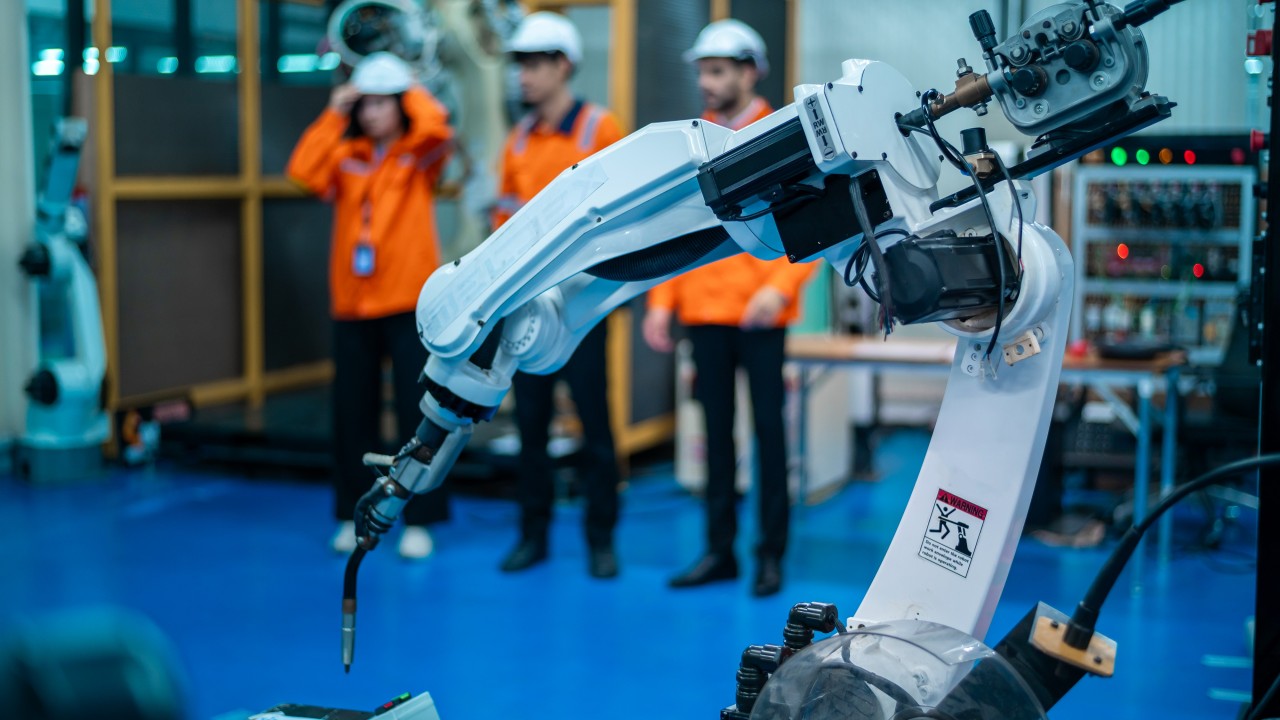
Why Refining Language Models Could Be A Smart Move
Reasons You Should Consider Refining A LLM
A lot of companies are waking up to the power of large language models like ChatGPT and Claude—but just using them out of the box isn’t enough. If you’re serious about AI, you don’t want a one-size-fits-all model. You want something that knows your business inside and out. That’s why we’re refining LLMs for internal use—because the real value is in customizing them to fit our exact needs.
The first reason is obvious: data privacy.
If you’re sending sensitive data—code, financials, contracts—through a public API, you’re exposing yourself. That data is your edge, and you can’t afford for it to leak or be used to train someone else’s model. Running models in a private environment—on your own servers or in a locked-down cloud—gives you control. No black boxes. No mystery.
Then there’s specialization.
Public models are generalists. They’re trained on Reddit and Wikipedia—not your knowledge base, your product, or your team’s way of thinking. By refining a model internally, we’re teaching it to speak our language—our tone, our shorthand, our edge cases. That kind of alignment makes a huge difference when you’re trying to use AI to actually get work done.
Performance matters too.
We’re not using LLMs for fun—we’re using them to write reports, process data, automate customer support, even write code. The more the model understands our workflows, the more valuable it becomes. You want it trained on your systems, your documents, your logic. That’s how it stops being a novelty and starts being infrastructure.
Cost is another factor.
LLM APIs can get expensive fast if you’re doing any kind of real volume. When you bring a model in-house and optimize it for your actual usage, you can cut those costs down significantly. It’s not just about saving money—it’s about owning the stack and scaling on your own terms.
Own It.
There’s also a longer game here: owning your own AI knowledge base. A custom-tuned model becomes a strategic asset. It gets smarter about your business over time, it learns your values, and it becomes something no competitor can replicate. That’s not just operational efficiency—that’s IP.
On the product side, having a refined internal model lets us experiment faster. We can build and test tools, automate workflows, and integrate AI into our existing systems without friction. No rate limits, no guessing how a public model will behave. Total control.
Finally, integration is key. We’re not building AI in isolation—we’re plugging it into the systems we already use: CRMs, internal dashboards, support tools. When the model knows your data and connects to your infrastructure, it becomes a real-time co-pilot, not just a chatbot on the side.
Bottom line: if you want AI to be more than a demo, you need to make it your own. Refining an LLM for internal use gives you the control, security, performance, and strategic leverage to turn AI from a trend into a competitive advantage. That’s where we’re focused—and that’s where the future is going.

Ways To Enhance Your LLM
Large Language Models (LLMs) like GPT-4 are powerful tools capable of generating human-like text across a wide range of topics.
However, updating their knowledge or customizing them for specific tasks requires specialized methods.
There are three primary approaches to achieving these enhancements for LLMs:
- Retraining the model
- Retrieval augmented generation (RAG)
- Uploading documents to the context window.
Each method serves specific purposes and comes with its own advantages and drawbacks.
1. Retraining the Model
Retraining, also known as fine-tuning, involves updating a pre-trained LLM’s knowledge parameters by feeding it new data. This method effectively rewires the model to learn and retain new information permanently, becoming specialized in particular tasks or domains. To do this, a carefully prepared dataset is required, typically with task-relevant information. For example, a customer service chatbot would likely be retrained on support conversations so it better understands and mimics specific tone and answers. The process begins with selecting a base model like GPT-3, followed by preprocessing and formatting the dataset. The model is then trained with new data using specific configurations such as learning rate and once retrained, it undergoes evaluation to verify improved performance. This method permanently altered the model with domain-specific capabilities. However, it’s resource-intensive, typically requiring high end hardware, time, and machine learning expertise.
2. Retrieval-Augmented Generation (RAG)
RAG is a combined approach that allows a language model to dynamically gather information from an external knowledge base at runtime. Instead of embedding all knowledge into the model through training, RAG setups use an indexed database of documents or structured information. When a query is made, the system searches this outside source for the most relevant context and feeds it into the model alongside the user’s prompt, enabling up-to-date and contextual answers. To implement RAG, documents must first be collected and indexed using vector databases such as FAISS or Weaviate. Queries are converted into embeddings, which are matched with relevant documents using similarity search. These retrieved snippets are then passed into the LLM, enabling it to incorporate recent and precise knowledge in its responses. This method is highly scalable and avoids the computational cost of retraining.
A real-world example is Workday’s internal AI assistant, which uses RAG to answer employee questions by retrieving information from company documents. So, if an employee asks about travel reimbursements, the assistant can access the latest HR policy and generate an accurate response. While RAG systems are less resource-intensive than retraining, they require a robust infrastructure to manage document ingestion, vector indexing, and search.
3. Contextual document uploads
This method is considered to be the most immediate way of customizing an LLM as it involves directly uploading a document into the system’s context window, giving the model access to external information for the duration of a session. In sessions, users can upload documents to the model such as PDF, text files, or scans and it will use this content to answer questions or generate text related to uploads. This approach doesn’t require retraining or database setup, it simply works by inputting the document content into the prompt or passing it as part of the LLMs context. Despite this, it’s bounded by the model’s context window size, which determines how much text the model can “view” at one time and once the session ends, the knowledge is lost, making it suitable for short-term or one-off tasks.
A good example comes from the insurance industry, where agents upload claim documents, accident reports, and customer history into a long-context model. The system uses this data to draft summaries and decisions without needing permanent incorporation of the documents.

Limitations and Failures of Each Method
These methods may have a great deal of benefits, but not without some drawbacks with the three techniques. Here are some limitations to each method of LLM enhancement:
Retraining
- Overfitting: Excessive fine-tuning can make the model become overly specialized, reducing its applicability to other tasks.
- Forgetting:Fine-tuning on new tasks can lead to the model forgetting previously learned information.
- Data Quality Issues: Biases or errors in the fine-tuning dataset can propagate through the model, affecting performance.
- Resource Intensive: Fine-tuning large models requires significant computational resources and time.
- Versioning Complexity: Managing multiple fine-tuned models can complicate deployment and maintenance.
2. Retrieval-Augmented Generation
- Irrelevant Retrievals: The system may fetch documents that are not pertinent to the query, leading to inaccurate responses.
- Latency Issues: Real-time retrieval can introduce delays, especially with large or complex document corpora.
- Embedding Mismatch: Inconsistent or poor-quality embeddings can result in suboptimal document retrieval.
- Stale Data: If the knowledge base isn’t regularly updated, the system may provide outdated information.
- Inconsistent Generation: Even with relevant documents, the model might produce responses that are incoherent or misleading.
- Security Risks: Improper access controls can expose sensitive information during the retrieval process.
3. Contextual Document Uploads
- Context Window Limitations: Models have a maximum token limit; exceeding this can truncate or omit important information.
- Session Ephemerality: Uploaded documents are only accessible during the current session; the model doesn’t retain them afterward.
- Parsing Errors: Poorly formatted documents (e.g., scanned PDFs) may be misinterpreted by the model.
- Prompt Confusion: Including too much or unstructured content can overwhelm the model, leading to vague or unrelated responses.
- No Real-Time Updating: Changes to the uploaded documents aren’t reflected unless re-uploaded.
- Security and Privacy Concerns: Sensitive information in uploaded documents must be handled carefully, especially in cloud environments.

Choosing the Best Method for You
Each of these methods offers unique strengths depending on the requirements. Retraining provides permanent, integrated knowledge made to fit specific applications but comes with high costs and complexity. RAG offers flexibility with real-time knowledge updates, making it ideal for environments with constantly changing data. Context window uploads are easy to use, offering a fast way to inform the model without long-term changes, but they are limited by temporary memory and document size.
Deciding between these three methods depends on the use case, needs and space the model will be used in, choosing which type creates efficiency and practicality.
The Future of Enhancing LLMs
The future of LLM enhancement lies in combining flexibility, accuracy and regulation. Retraining will become more accessible through lightweight methods like LoRA, while RAG will continue to lead for instant knowledge access. Contextual uploads will likely grow more powerful as long-context models improve.
All in all, the most effective systems will blend these methods; using fine-tuning for core expertise, RAG for dynamic updates, and context for fast, flexible input. As LLM technology evolves, so will the ways we extend and apply it to meet complex real-world needs.

Ready to Build Your Own Advantage?
LLMs are no longer just experimental tools—they’re becoming core infrastructure. But off-the-shelf models weren’t built to understand your business, your language, or your challenges. That’s where we come in. Whether you need a custom-trained model, a RAG-powered knowledge assistant, or just want to explore what’s possible with your data, we GAME PILL would love to talk.
If you’re thinking about how to make AI work for you—securely, strategically, and at scale—let’s talk Mike Sorrenti– I am always looking for more use cases.
#AI #ML #ArtificialIntelligence #MachineLearning #LLMS #LanguageModels #GenAI #GenerativeAI #OpenAI #GPT
Sources:
https://anirbansen2709.medium.com/finetuning-llms-using-lora-77fb02cbbc48
https://zohaib.me/a-beginners-guide-to-fine-tuning-llm-using-lora/
https://community.openai.com/t/knowledge-file-upload-limitations/1211638
https://www.perplexity.ai/page/context-window-limitations-of-FKpx7M_ITz2rKXLFG1kNiQ
https://www.wsj.com/articles/from-rags-to-vectors-howbusinessesare-customizingai-models-beea4f11
https://www.datacamp.com/tutorial/fine-tuning-large-language-models





